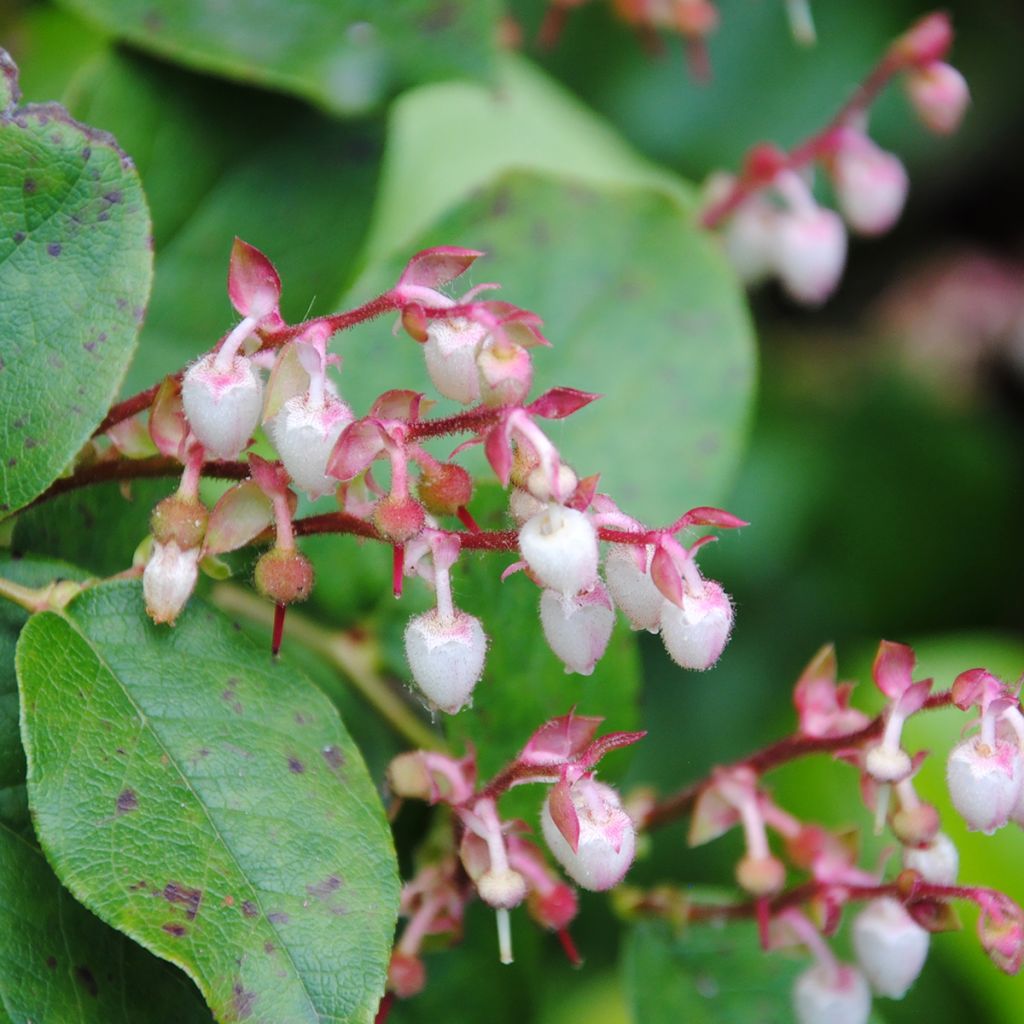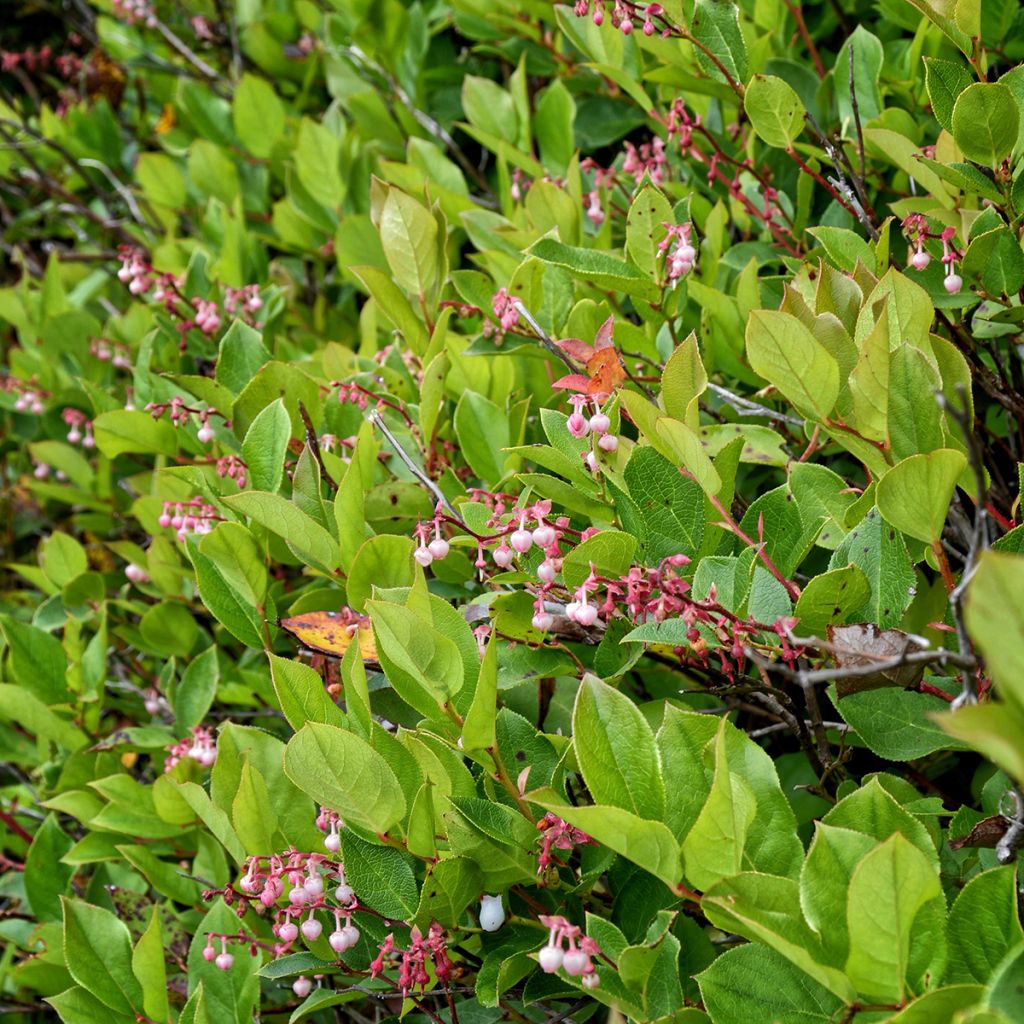

Gaultheria shallon


Gaultheria shallon


Gaultheria shallon


Gaultheria shallon
Gaultheria shallon
Gaultheria shallon
Gaultheria, Salal, Shallon
Special offer!
Receive a €20 voucher for any order over €90 (excluding delivery costs, credit notes, and plastic-free options)!
1- Add your favorite plants to your cart.
2- Once you have reached €90, confirm your order (you can even choose the delivery date!).
3- As soon as your order is shipped, you will receive an email containing your voucher code, valid for 3 months (90 days).
Your voucher is unique and can only be used once, for any order with a minimum value of €20, excluding delivery costs.
Can be combined with other current offers, non-divisible and non-refundable.
This plant carries a 24 months recovery warranty
More information
We guarantee the quality of our plants for a full growing cycle, and will replace at our expense any plant that fails to recover under normal climatic and planting conditions.
Would this plant suit my garden?
Set up your Plantfit profile →
Description
Gaultheria shallon is an evergreen shrub with dark green foliage, pretty, white-pinkish and bell-shaped flowers in spring, and decorative fruits that turn from purple to black in autumn. With an average height of 1.20m (3 ft 11 in), it spreads in width over time through natural layering. Intolerant to limestone, Gaultheria (or salal) grows in neutral to acidic soil, sufficiently humus-rich, remaining moist in summer but well-drained. Resistant to cold, this shrub grows in semi-shade, on the edge or under the cover of trees that will protect it from the sun and provide it with a damp atmosphere.
Gaultheria shallon is a plant of the Ericaceae family (the heathers) and more precisely of the Vaccinioideae subfamily (the blueberries). This lineage is evident through all the attributes of this shrub, from its soil requirements, its typical, bell-shaped flowers with fused-petals, to its small black fruits resembling blueberries, edible but tasteless.
Native to the west coast of North America, Gaultheria forms large vegetative carpets in Californian conifer forests subject to coastal fog. This natural habitat explains the preference of this shrub for freshness and its sensitivity to summer drought. The Gaultheria is a shrub with dense foliage that forms large carpets on the ground and can become invasive.
In our gardens, the Gaultheria is primarily used for its ornamental qualities. Its ovoid evergreen leaves, light green when they emerge, become dark when mature. The flowering occurs in May-June, in the form of clusters of small bells about one centimeter in size, with a beautiful white-pink colour enhanced by red petioles. Purple fruits follow the flowers and turn black in late summer and autumn. The shrub reaches a height of 1.20m (maximum 1.50m (4 ft 11 in)) with a spread of 1.50m (4 ft 11 in) or more, as it spreads through natural layering, with the branches touching the ground eventually rooting, to form a new clump. It thus forms a dense vegetative carpet covering the ground.
The Gaultheria is not a difficult plant as long as it is given a suitable location, under the branches of trees, and especially if its edaphic (soil) requirements are met. It needs freshness, especially in summer, but not excessive moisture, especially in winter. It does not tolerate limestone and can only be planted in neutral to acidic soil. Hardy up to -20 °C (-4 °F), it does not fear winter frosts in well-drained soil.
With its wild appearance, Gaultheria shallon will perfectly integrate into a natural garden setting. Birch trees planted in groups will provide the shade it needs and create a particularly aesthetic decorative bark scene. The superb Himalayan birch, grown alongside Betula albosinensis 'Fascination' - which well deserves its name with its beige-orange bark - or the 'Shiloh Splash' birch with its beautifully variegated white foliage, will thus form a small grove of reasonable size and compatible with most gardens. The Gaultheria will remain low enough so as not to hide these decorative barks and will cover the ground at the foot of these beautiful small trees.
In milder climates, Erica canaliculata, with dimensions comparable to the Gaultheria and sharing the same cultural requirements, will create a wild scene under the light cover of tall trees.
Report an error about the product description
Gaultheria shallon in pictures






Plant habit
Flowering
Foliage
Botanical data
Gaultheria
shallon
Ericaceae
Gaultheria, Salal, Shallon
North America
Planting and care
Gaultheria shallon likes neutral to acidic soils and cannot tolerate limestone. It is therefore a strict calcifuge plant, which will thrive in a fresh, humus-rich substrate, but well-drained. In the presence of a slightly heavy soil, sand (non-limestone) should be incorporated to prevent stagnant water. Similarly, a soil that is too sandy should be enriched with compost or ericaceous compost to maintain moisture in summer. In summary, this small shrub needs freshness, even humidity, but it fears both summer drought and excess water in winter.
Therefore, it should be planted in a semi-shaded location on the edge of a woodland, or even in a shaded spot in the undergrowth of trees to provide it with an ideal growing environment. Under these conditions, Gaultheria will thrive and spread naturally by layering. Since the soil should not dry out, it is necessary to monitor in summer and intervene if necessary, making sure to water with soft water (for example, rainwater collected in a reservoir).
Planting period
Intended location
Care
Planting & care advice
This item has not been reviewed yet - be the first to leave a review about it.
Haven't found what you were looking for?
Hardiness is the lowest winter temperature a plant can endure without suffering serious damage or even dying. However, hardiness is affected by location (a sheltered area, such as a patio), protection (winter cover) and soil type (hardiness is improved by well-drained soil).

Photo Sharing Terms & Conditions
In order to encourage gardeners to interact and share their experiences, Promesse de fleurs offers various media enabling content to be uploaded onto its Site - in particular via the ‘Photo sharing’ module.
The User agrees to refrain from:
- Posting any content that is illegal, prejudicial, insulting, racist, inciteful to hatred, revisionist, contrary to public decency, that infringes on privacy or on the privacy rights of third parties, in particular the publicity rights of persons and goods, intellectual property rights, or the right to privacy.
- Submitting content on behalf of a third party;
- Impersonate the identity of a third party and/or publish any personal information about a third party;
In general, the User undertakes to refrain from any unethical behaviour.
All Content (in particular text, comments, files, images, photos, videos, creative works, etc.), which may be subject to property or intellectual property rights, image or other private rights, shall remain the property of the User, subject to the limited rights granted by the terms of the licence granted by Promesse de fleurs as stated below. Users are at liberty to publish or not to publish such Content on the Site, notably via the ‘Photo Sharing’ facility, and accept that this Content shall be made public and freely accessible, notably on the Internet.
Users further acknowledge, undertake to have ,and guarantee that they hold all necessary rights and permissions to publish such material on the Site, in particular with regard to the legislation in force pertaining to any privacy, property, intellectual property, image, or contractual rights, or rights of any other nature. By publishing such Content on the Site, Users acknowledge accepting full liability as publishers of the Content within the meaning of the law, and grant Promesse de fleurs, free of charge, an inclusive, worldwide licence for the said Content for the entire duration of its publication, including all reproduction, representation, up/downloading, displaying, performing, transmission, and storage rights.
Users also grant permission for their name to be linked to the Content and accept that this link may not always be made available.
By engaging in posting material, Users consent to their Content becoming automatically accessible on the Internet, in particular on other sites and/or blogs and/or web pages of the Promesse de fleurs site, including in particular social pages and the Promesse de fleurs catalogue.
Users may secure the removal of entrusted content free of charge by issuing a simple request via our contact form.
The flowering period indicated on our website applies to countries and regions located in USDA zone 8 (France, the United Kingdom, Ireland, the Netherlands, etc.)
It will vary according to where you live:
- In zones 9 to 10 (Italy, Spain, Greece, etc.), flowering will occur about 2 to 4 weeks earlier.
- In zones 6 to 7 (Germany, Poland, Slovenia, and lower mountainous regions), flowering will be delayed by 2 to 3 weeks.
- In zone 5 (Central Europe, Scandinavia), blooming will be delayed by 3 to 5 weeks.
In temperate climates, pruning of spring-flowering shrubs (forsythia, spireas, etc.) should be done just after flowering.
Pruning of summer-flowering shrubs (Indian Lilac, Perovskia, etc.) can be done in winter or spring.
In cold regions as well as with frost-sensitive plants, avoid pruning too early when severe frosts may still occur.
The planting period indicated on our website applies to countries and regions located in USDA zone 8 (France, United Kingdom, Ireland, Netherlands).
It will vary according to where you live:
- In Mediterranean zones (Marseille, Madrid, Milan, etc.), autumn and winter are the best planting periods.
- In continental zones (Strasbourg, Munich, Vienna, etc.), delay planting by 2 to 3 weeks in spring and bring it forward by 2 to 4 weeks in autumn.
- In mountainous regions (the Alps, Pyrenees, Carpathians, etc.), it is best to plant in late spring (May-June) or late summer (August-September).
The harvesting period indicated on our website applies to countries and regions in USDA zone 8 (France, England, Ireland, the Netherlands).
In colder areas (Scandinavia, Poland, Austria...) fruit and vegetable harvests are likely to be delayed by 3-4 weeks.
In warmer areas (Italy, Spain, Greece, etc.), harvesting will probably take place earlier, depending on weather conditions.
The sowing periods indicated on our website apply to countries and regions within USDA Zone 8 (France, UK, Ireland, Netherlands).
In colder areas (Scandinavia, Poland, Austria...), delay any outdoor sowing by 3-4 weeks, or sow under glass.
In warmer climes (Italy, Spain, Greece, etc.), bring outdoor sowing forward by a few weeks.








































